|
|
Nathaniel Coleman. Utopias and Architecture. — London ; New York, 2005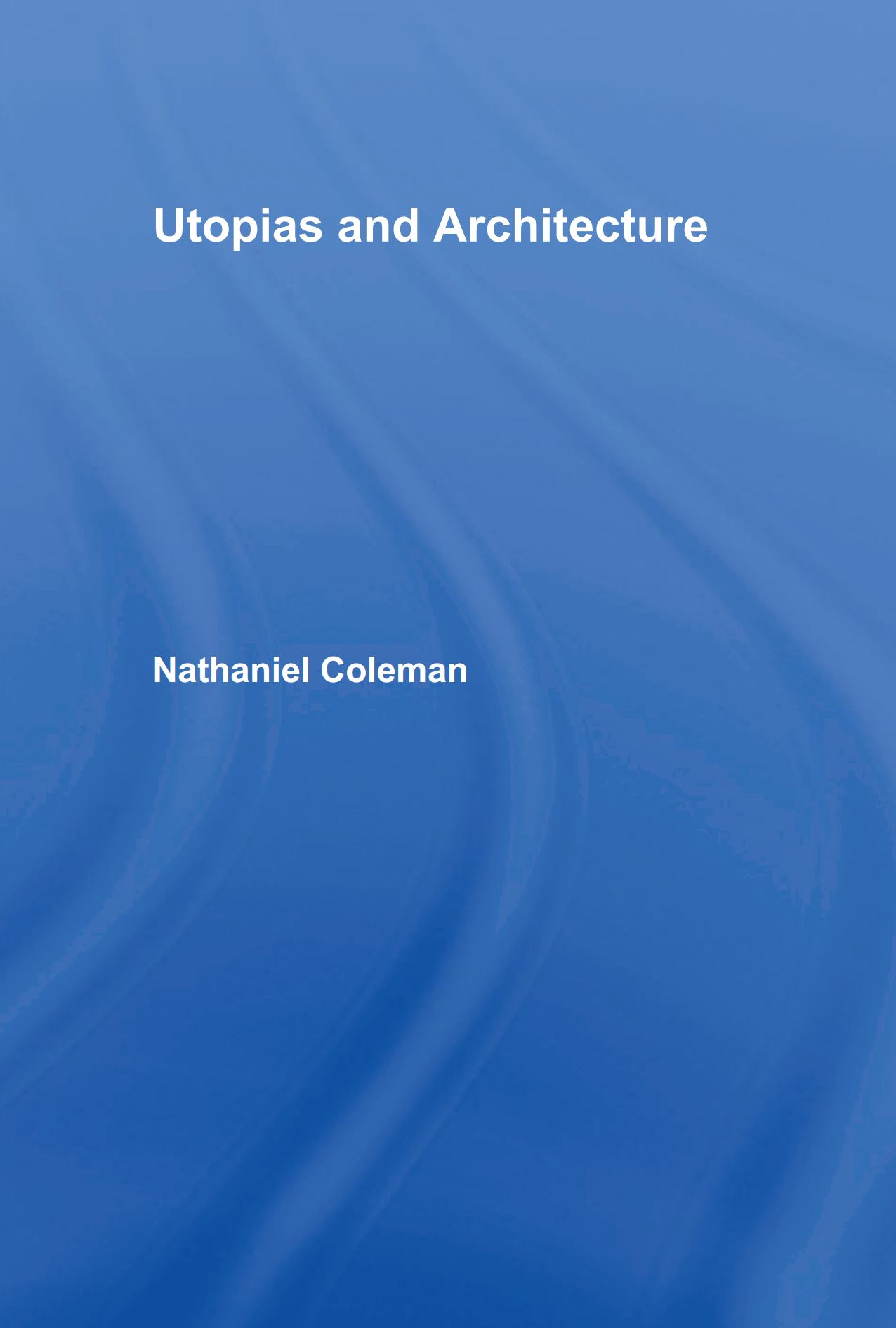 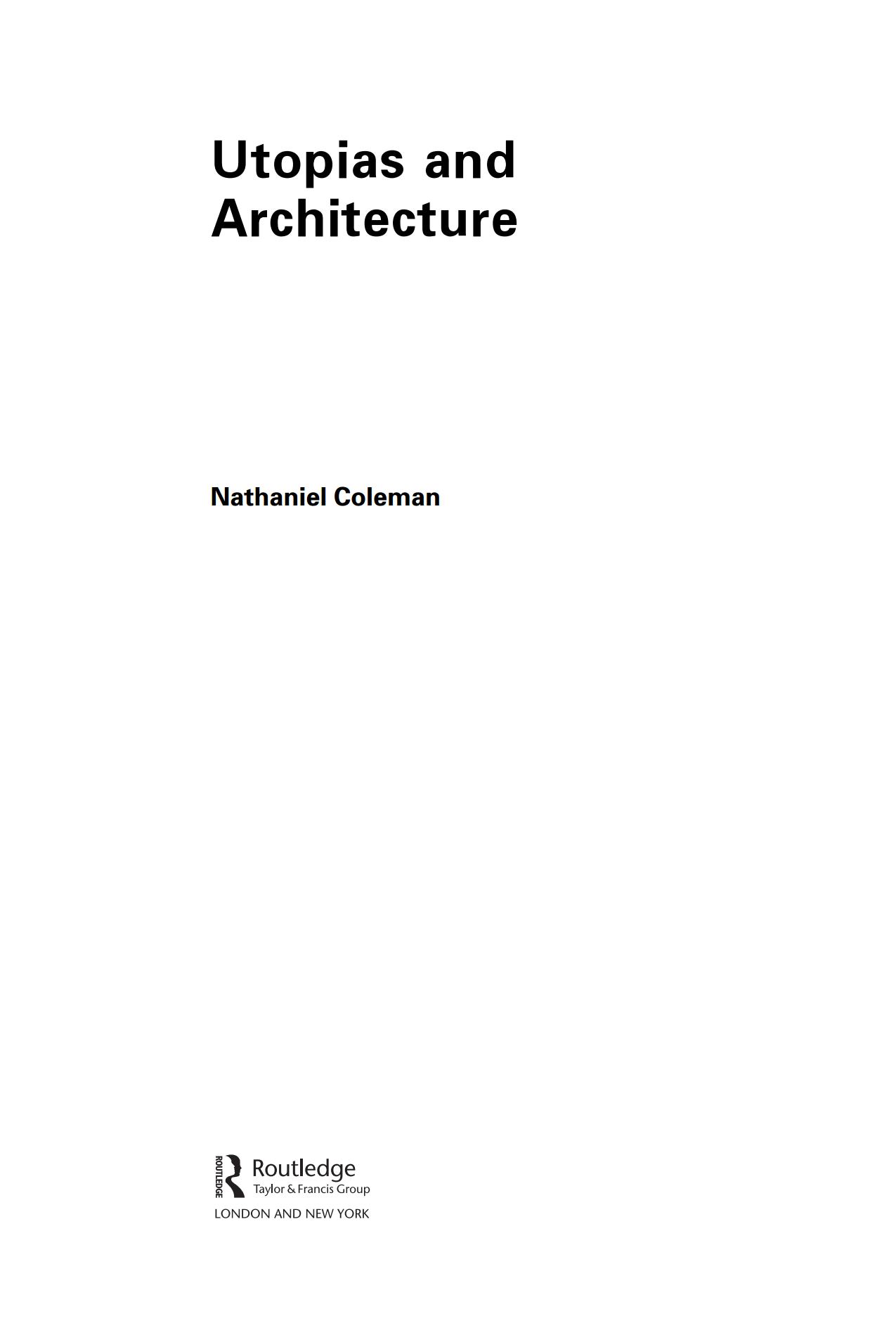 Utopias and Architecture / Nathaniel Coleman. — London ; New York : Routledge, 2005. — IX, [3], 334 p., ill. — ISBN 0–415–70084–1 (hbk) ; ISBN 0–415–70085–x (pbk)
Utopias and Architecture is concerned with the enduring central question in architecture of how buildings communicate. Post-modern architecture often fails to create welcoming built environments, yet in this book Nathaniel Coleman shows how a significant contemporary architecture persists as a real possibility. Utopia is examined as fundamental to the invention of a meaningful architecture and Nathaniel Coleman traces the role of utopias for social imagination through architectural theory and history, utopian literature, utopian studies, philosophy, sociology and anthropology.
Comprising an investigation of architectural ideas and works of the 1950s and 1960s, the author focuses on Aldo van Eyck's Amsterdam Orphanage, Louis I. Kahn's Salk Institute and Le Corbusier's La Tourette. These exemplary works, constructed when modernist orthodoxy was faltering, proposed an alternative modernity which revealed pathways to recuperating architectural meaning. Nathaniel Coleman extends his investigation into the present, examining Daniel Libeskind's Berlin Jewish Museum, Tod Williams and Billie Tsien's Neurosciences Institute and Renzo Piano's Tjibaou Cultural Centre, buildings that continue to renew the tradition of modern architecture in distinct ways.
Utopias and Architecture presents an alternative to the predominant current modes of theorizing and practising. No book available on architecture examines utopia with equal depth, or so persuasively challenges conventional readings of the role of utopia for architectural invention, making this work a unique contribution to architectural design methodology, history and theory and utopian studies.
Nathaniel Coleman first studied architecture at the Institute for Architecture and Urban Studies in New York, and continued his education at the Rhode Island School of Design. He practiced in New York and Rome and completed his PhD at the University of Pennsylvania, where Joseph Rykwert was his supervisor. Currently a Senior Lecturer in Architecture and Urban Design and the Director of Architecture and Landscape, Coleman is also a member of the Centre for Tectonic Cultures Research Group at the University of Newcastle upon Tyne. He previously taught in the US.
Contents
Illustration credits viii
Acknowledgments ix
Introduction: utopias and architectures? 1
Part 1: Conceptualizing utopias 7
1 Architecture and orientation 9
2 Situating utopias 24
3 Real fictions 46
4 Varieties of architectural utopias 63
5 Postwar possibilities 88
Part 2: Optimistic architectures 113
6 Le Corbusier's monastic ideal 115
7 The life within 133
8 Fairy tales and golden dust 155
9 Kahn and Salk's challenge to dualistic thinking 174
10 Aldo van Eyck's utopian discipline 196
11 Story of another idea 214
12 The unthinkability of utopia 234
13 Into the present 257
Notes 297
Select bibliography 319
Index 327
Utopia has long been another name for the unreal and the impossible. We have set utopia over against the world. As a matter of fact, it is our utopias that make the world tolerable to us.
From The Story of Utopias (1922), Lewis Mumford, Gloucester, MA: Peter Smith, 1959, p. 1
A map of the world that does not include Utopia is not worth even glancing at, for it leaves out the one country at which Humanity is always landing. And when Humanity lands there, it looks out, and seeing a better country sets sail.
From The Soul of Man Under Socialism (1891), Oscar Wilde. Online. Available at https://wilde.thefreelibrary.com/ Soul-of-Man-under Socialism (6 January 2005)
Introduction: utopias and architectures?
Architecture should embody the invisible, the hopes and dreams in something we live in, we die in and we remember.
Daniel Libeskind¹
____________
¹ Daniel Libeskind, The Space of Encounter, London: Thames and Hudson, 2001, p. 91.
Because my main concern in this book may appear to be about a particular type of utopia, expressible at least in architectural terms as 'humane modernism', its title, Utopias and Architecture, may be deceptive. If humane modernism is a reasonable category of architectural elaboration, which I think it is, it denotes a reaction to the most reductive aspects of modern (twentieth-century) architecture, which critic and historian Kenneth Frampton calls 'orthodox modern'.
It is architecture based, in large part, on the 'Athens Charter (1933)' of CIAM, a French acronym for what translates in English as the International Congress of Modern Architecture. CIAM was established in 1928 to shepherd the then new architecture from the periphery of culture to its centre, which by the post-World War II years had mostly been accomplished. Its last meeting took place in 1959. Nevertheless, since the late 1940s, 'humanist modern' reactions to the ubiquity of 'orthodox modern' architecture have made inroads. Significant examples of this alternative include the later buildings of Le Corbusier (1887–1965), the post-1950s work of Louis I. Kahn (1901–1974) and the buildings of Dutch architect Aldo van Eyck (1918–1999), which is why the theory and practice of these three architects is at the heart of the present discussion.
The Athens Charter, set down by Le Corbusier in 1941, draws on efforts to establish the tenets of the functional city originating more than a decade earlier, which, broadly put, would redress the inefficiencies of outmoded traditional cities. In the functional city, chaos, brought on by the introduction of the machine (modernity/ the automobile) would be eradicated, not by restricting machines but by remaking cities more rationally so that they could absorb the consequences of technological advance. To do this, cities would have to become more scientific, less emotionally charged.
Paradoxically, the reformist tone of the 'Charter' reveals not the potential of an enriched city but rather one reduced, rigidly clarified and emptied, as much as possible, of its mysterious contradictions – particularly its complex physical organization and mixed adjacencies of different kinds of occupation. Even though human scale was meant to be the basis for all planning decisions of the functional city, the result suggested is of minimums made into the maximum possibility. By now, the long-standing rigid separation of types of uses, reorganization of street patterns in conformity with the requirements of traffic planners, and a general disciplining of the urban condition according to the logic of a pseudo-scientific rationalism has overwhelmed the traditional city. Although their limitations long ago became known, these characteristics continue in the present day to define the struggle between what makes cities places of wonder (possibility) and the desire to manage them (control).
If there ever was a utopian dimension to the attitude revealed by CIAM in the Athens Charter, it turned on the belief that, 'on both the spiritual and the material planes, the city must ensure individual liberty and the advantages of collective action'.² The tension between ample scope for possibility and stultifying control sets the stage for my attempt to reform the concept of utopia, now mostly associated with a desire for order spurred on by supposed rationality taken to irrational extremes. Nevertheless, if utopia seems destined to occlude liberation, realization of liberty's promise depends on social imagination, which in turn relies on utopian dreaming to open up pathways toward its achievement.
____________
² CIAM, Charter of Athens, Tenets (1933), set out by Le Corbusier in the Charter of Athens, 1941, reprinted in Programs and Manifestoes on 20th-Century Architecture, Ulrich Conrads (ed.), Michael Bullock (trans.), Cambridge, MA: MIT Press, 1970, pp. 136–45.
Utopia in the plural (the Utopias of the title) suggests, first, not one architectural style or another but rather that the concept of utopia can have multiple senses: one recognized by adherents of liberal democracies as pathological; the other, embraced by aspirants for even more than liberal democracies can deliver, as constitutive. The worst excesses of totalitarian states can be part of a utopian project but so can the greatest achievements of social reformers who put their schemes into action, even partially. The potential of utopian imagination and its capacity for terror seem to turn on the permissibility of partiality as opposed to totality. Absoluteness opposes acceptance. Utopia turns mean, pathological, when the model of a superior situation, which it puts forward must be fully realized. The 'all or nothing' demand commonly associated with utopian projection taints its constitutive potential.
Between the constitutive potential of utopia and its capacity to turn pathological, there swarm near-infinite expressions of what 'the good life' ought to be and what it must never include. Hence, I am more concerned with how architects invent exemplary buildings than with some fixed notion about the good life and its setting, which, at any rate, might quickly become outdated. In short, the argument elaborated throughout this book is that exemplary architecture is always part of some potential whole imagined by its architect, a whole that serves as an organizing model – even if for the realization of only a single building – conceived of as a partial utopia. Moreover, such buildings are primarily expressions of social imagination, meditations on how individuals or groups do, or might, come together upon the stage offered by a particular setting. As I will attempt to show, it is impossible to neglect utopia in the formulation of social imagination (although it is probably easier to acknowledge the crucial role social imagination plays in the invention of exemplary architecture than it is to accept utopia).
An enduring exemplary?
The word exemplary and its association with particular examples of architecture, in this instance Le Corbusier's Convent of Sainte-Marie-de-la-Tourette at Eveux-sur-l'Abresle, France (1953–1960), Louis Kahn's Salk Institute for Biological Studies, La Jolla, California (1959–1965) and Aldo van Eyck's Municipal Orphanage, Amsterdam (1955–1960), might suggest that I am advancing a restrictive view of architectural merit based on personal taste. Alternatively, even more alarming, it could appear as though I am militating for a limited set of forms whose appeal is universal and timeless, based in the elementary forms of archaic habitation, especially pure archetypical geometric shapes, such as circles and squares.
The exemplariness of a building may not be permanent, but within a given culture, it certainly seems enduring. The continuing hold that Solomon's Temple, the Parthenon, the Pantheon, the Hagia Sophia, Chartres Cathedral, St Peter's and the Campidoglio exert over the imagination confirms this. In the middle ground, between the end of the Renaissance and the present, identifying the type of exemplariness the aforementioned buildings embody is more difficult. From the sixteenth through the nineteenth century, a series of extensions, elaborations and revivals confirm the continuing influence of these buildings, all of which had circles and squares in varying degrees of evidence. It is even less easy to say which buildings of modern times, from around the dawn of the twentieth century to the present, will continue to be admired a thousand years from now. However, it is possible to argue that whatever the above listed buildings do not share stylistically they might well share conceptually: primarily a utopian dimension that is emphatically social. With that in mind, it might be possible to learn from earlier (exemplary) buildings without either copying them or rejecting the uniqueness of the present.
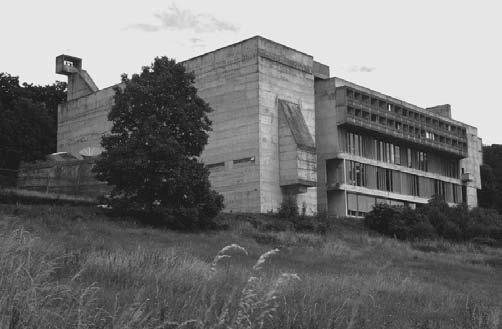
0.1
View from north-west. Convent of La Tourette, Eveux-sur-l'Abresle, 1953—1960.
Architect: Le Corbusier
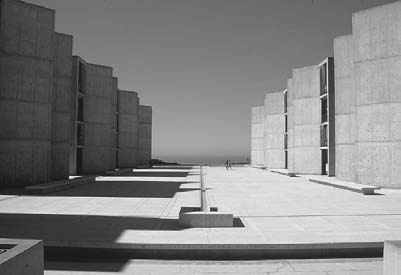
0.2
View towards the Pacific Ocean. Salk Institute for Biological Studies, La Jolla, CA, 1959–1965.
Architect: Louis I. Kahn
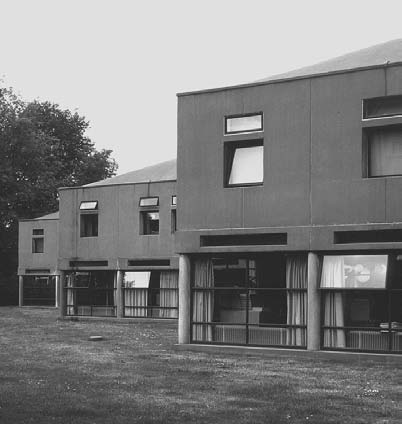
0.3
View towards the north-west. Amsterdam Orphanage, Amstelveenseweg, Amsterdam, 1955–1960.
Architect: Aldo van Eyck
The speed with which fashion and taste now change and the degree to which culture seems unstable (even more plural than utopias) arguably makes any sense of continuity retrogressively nostalgic. Only the conditions of a closed society with a culture that evolves barely at all or at a near glacial pace (in a pre-global warming sense) could assure the continuing appeal or relevance of particular forms. Nevertheless, my argument in favour of utopias' relevance for architectural invention is not predicated on either formalist or stylistic preferences; actually, my objective is to reveal the problems with just such modes of evaluation.
The concepts I develop are hopefully flexible, or supple, enough to be sustainable, even extrinsic to particular forms. My intention is to elaborate on principles without suggesting a presupposed stylistic or formal result; what I propose is far more situational than universal or archetypal. In this, I follow van Eyck's theory in practice. He was preoccupied with parallel historical and cultural traditions, viewed through a lens of relativity, each of which, he believed, could inform the most modern work in the West. It is not so much geometrical forms as forms of conduct that concern me. Rather, what does concern me is how architects can offer a setting able to contain the continual elaboration and invention of social action, which is the argument I advance in favour of the examples examined herein. If there is a preoccupation with the past, it turns on the degree to which each architect envisions a radically altered future through an idealized imaginary past.
Van Eyck, Kahn and Le Corbusier (as early as the 1930s) may be considered together, not simply because each informed the other and often built with concrete. They had similar aims as well. Chiefly, each sought to enrich orthodox modern architecture beyond its limitations without rejecting it, which van Eyck and Kahn especially imagined as necessary if architects were to have any hope of touching the emotions of the people for whom they build. Throughout their lives, these architects were preoccupied with institutions and the social lives of individuals, especially the settings architects provide to house the first for the elaboration of the second. Such commonalities are touched on throughout the work, particularly in those chapters specifically dedicated to a study of their theories and practices.
Optimistic architecture³
____________
³ Optimistic as I use it here draws upon Plato’s assertion (particularly in The Laws) that the purpose of life is to strive for virtue, even if its ideal or perfect form is as unachievable by human beings as it is by states. Optimism tempered by a tragic view nonetheless requires maintenance of virtue as a target at which to aim. In the event, Plato’s conception of the virtuous life and state suggest the possibility of an architecture that I am calling ‘optimistic’.
My consideration of an optimistic architecture (of the ought) begins where architectural treatises and literary utopias intersect: where individual propositions of the right principles of architecture meet individual propositions of the principles of right societies. While literary Utopias are key to my research, it is the imagining and making of architecture that is the focus, and it is my desire to begin revealing those aspects of architectural thinking and doing that are analogous to utopian projection. To that end, I consider imagination as a process that works upon content, and utopia as a part of this process. And because utopia is one of the very few survivors of holistic thinking to persist from the origins of the modern through the earliest questioning of it into the present, it has much to offer present day architectural practice, especially as a pathway toward recollecting its orienting objective.
Ultimately, my objective is to elaborate on a sorely neglected dimension of utopian influence on architecture. Considerations of utopia tend to overlook its positive dimension because utopia and architecture too often pair up with questionable results. Most negatively, this includes a conception of utopia as proposing exclusively totalizing projects for absolute application. In contradistinction to the common view of utopia as absolute and therefore impossible, the dimension of utopian influence on architecture I explore is the underexamined potential of utopias to contribute to a continuing renewal of architecture. Something utopias can do by encouraging recollection of the architect's capacity to invent settings for the social.
Reforming utopia
My overarching aim here is to reposition utopia as a positive informing model, rather than as an absolute, restrictive and impossible one. As such, I advance a redefinition of utopia that links it to desires for wholeness that need not be fully realized to remain valid or valuable. Familiar understandings of the utopian concept are introduced, which, by contrast, highlight my reconceptualization of utopia as an idea in the plural (utopias), a multidimensional concept with positive and negative potential and far-reaching consequences. Development of the relationship between utopia and architecture proceeds alongside emphatic affirmation of the social dimension of both. In my effort to identify utopian potential, I will show how distinguishing the concept of utopia from science fiction, futurology and technological utopianism, with which it is often confused, is necessary for an understanding of architecture and utopia.
Throughout, I will argue that architectural invention is akin to utopian projection and that utopia harbours the potential to rescue architecture from aimlessness, obsessive matter-of-factness, or a non-critical embrace of global capitalism. Correspondingly, utopia is revealed as a more supple (open, rather than closed) concept than familiar understandings of it permit, which extends ideas of utopia while demonstrating its relevance to current debates surrounding the objectives of architecture.
In the chapters that follow, I elaborate on the concepts of utopia in general and on the idea of a 'humanist utopia' in particular. These chapters elaborate on how utopia is conceptualized, particularly by challenging contemporary obsession with novelty. In the penultimate chapter, utopia is reintroduced as a content of the imagination made tolerable by being unspoken, while remaining necessary for invention of an exemplary architecture. In the final chapter, I examine the concepts developed through consideration of recent architecture (completed during the 1990s), which will reveal the continuing relevance of the conclusions I advance, regardless of apparent architectural style.
Present future
If Aldo van Eyck had a failing, it was his inability to identify any present-day architects as fellow travellers. Consequently, right up until his death in 1999, he dismissed most recent architecture, much of it for good reason. Just as my argument in favour of utopia emphasizes partial completion over total application, there must have been one or two architects doing worthy work, even in the 1990s. Sadly, for all his sophistication and cultural depth, van Eyck's stubborn disapproval of most post-war architecture makes it all too easy to dismiss his resistance as reductive and simplistic, no matter how untimely that would be. I have attempted to be less partisan and perhaps more balanced than van Eyck might have been, hopefully without overly diluting my polemic.
Arguing for the value of utopia as social imagination in the invention of architecture may not be particularly fashionable, especially when done through a glance backwards to the future by way of ideas and buildings from the 1950s and 1960s. Nonetheless, the promise of contemporary architecture is my primary concern. Toward that end, in the final chapter I will consider the work of three architects currently practiscing, who are stylistically and formally distant from Le Corbusier, Kahn and van Eyck, but whose work (and theories) can contain and support the concepts I develop nonetheless. These architects and their buildings include the Jewish Museum, Berlin (1989–1999) by Daniel Libeskind, The Neurosciences Institute, La Jolla, California (1992–1995) by Tod Williams and Billie Tsien, and the Jean-Marie Tjibaou Cultural Centre, Nouméa, New Caledonia (1991–1998) by Renzo Piano.
Sample pages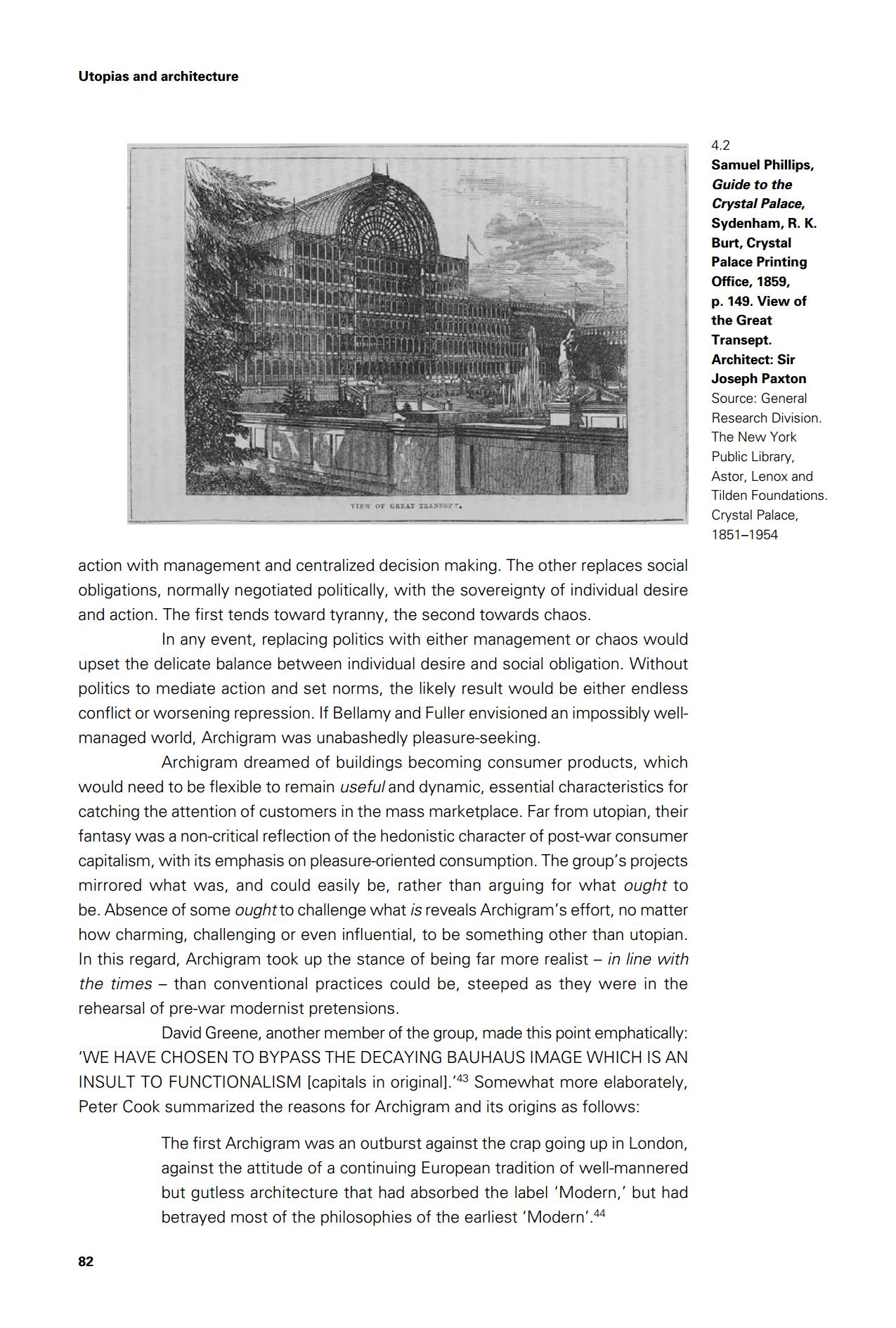 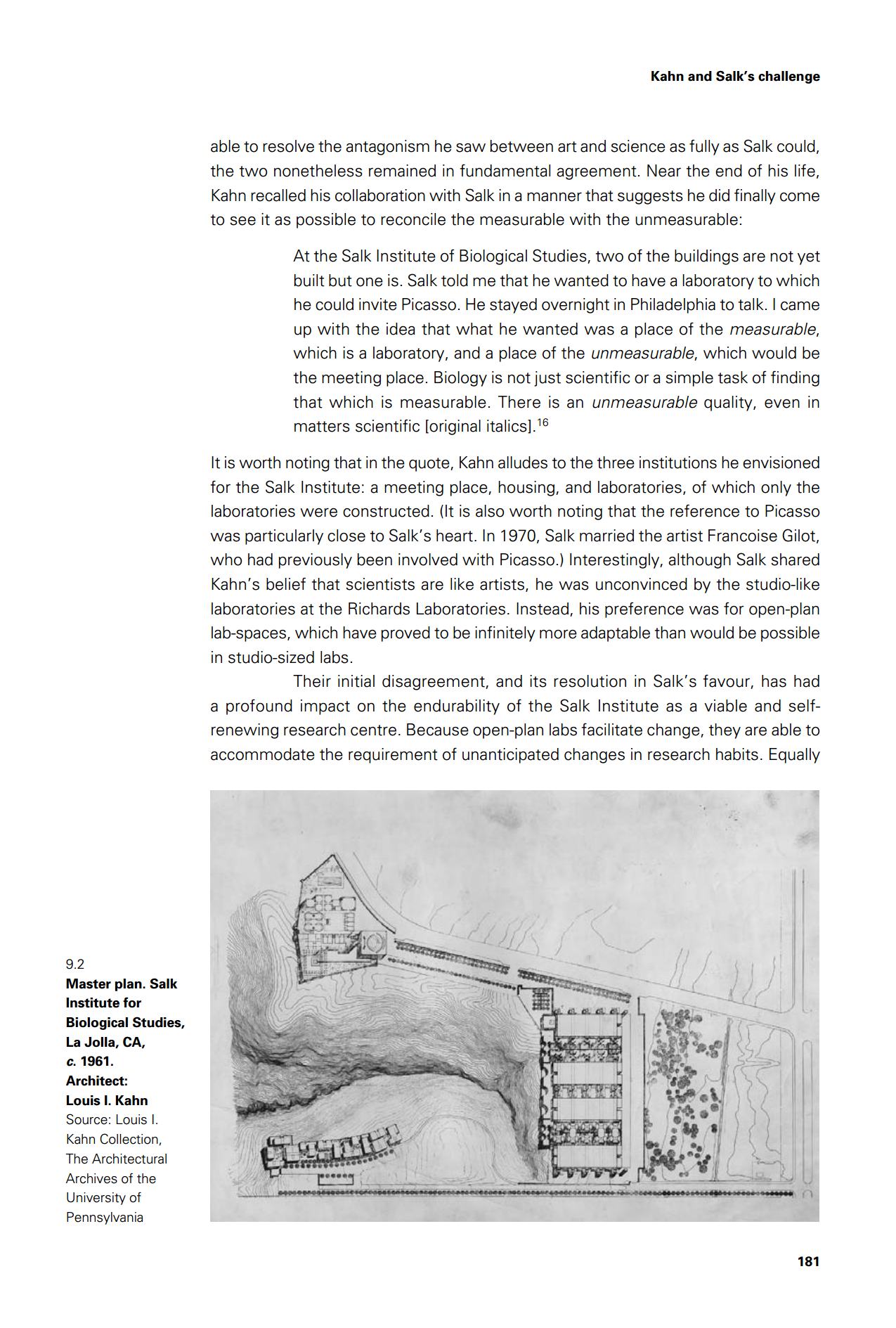
Download link (pdf, yandexdisk; 5.3 MB)
The electronic version of this edition is published only for scientific, educational or cultural purposes under the terms of fair use. Any commercial use is prohibited. If you have any claims about copyright, please send a letter to 42@tehne.com.
21 декабря 2023, 13:49
0 комментариев
|
Партнёры
|






Комментарии
Добавить комментарий